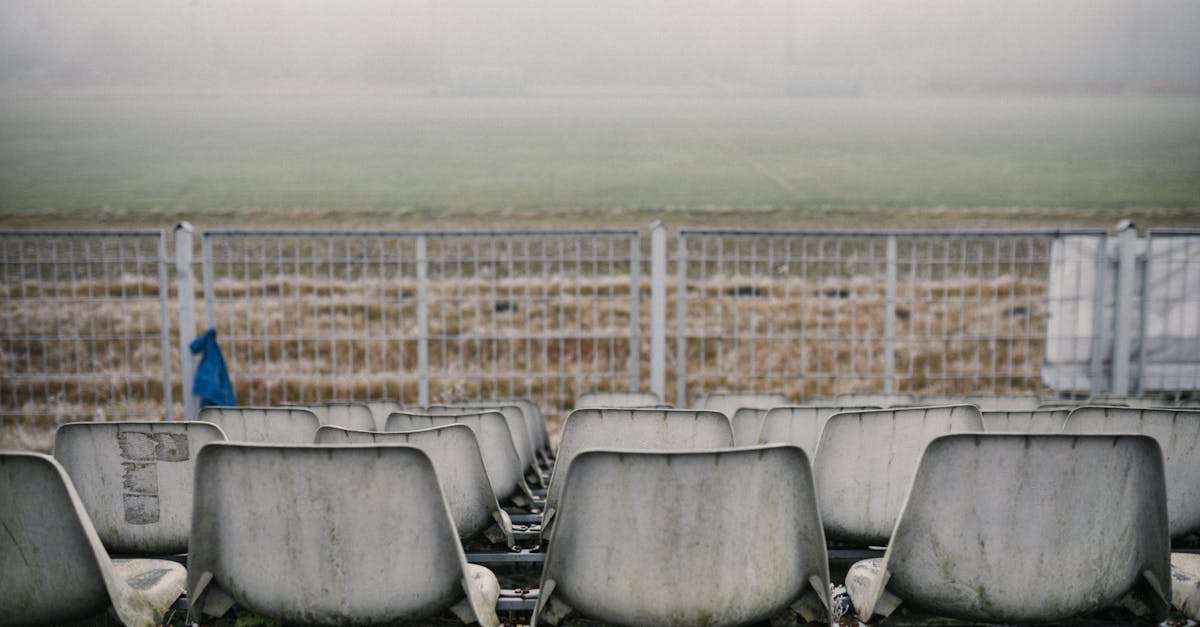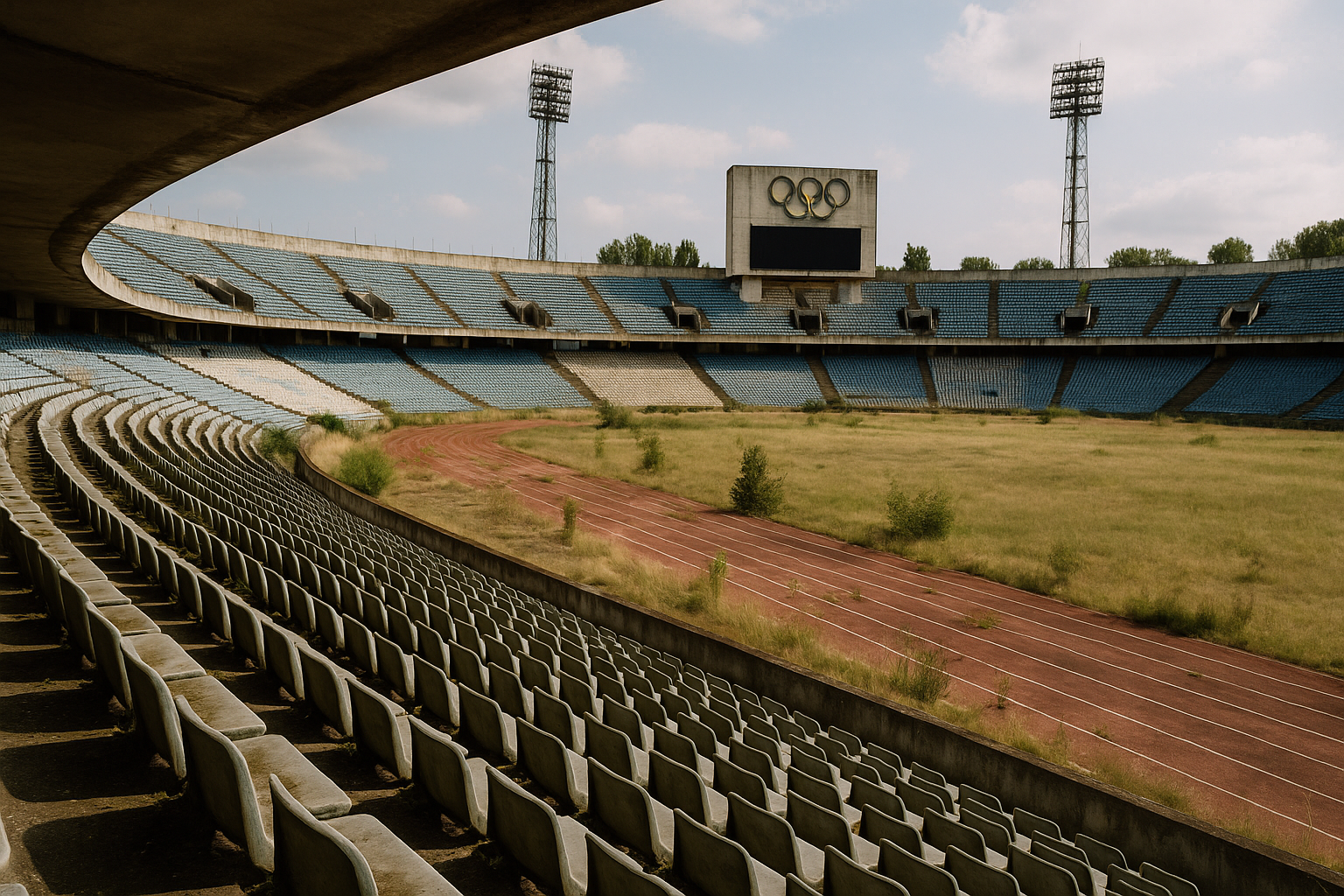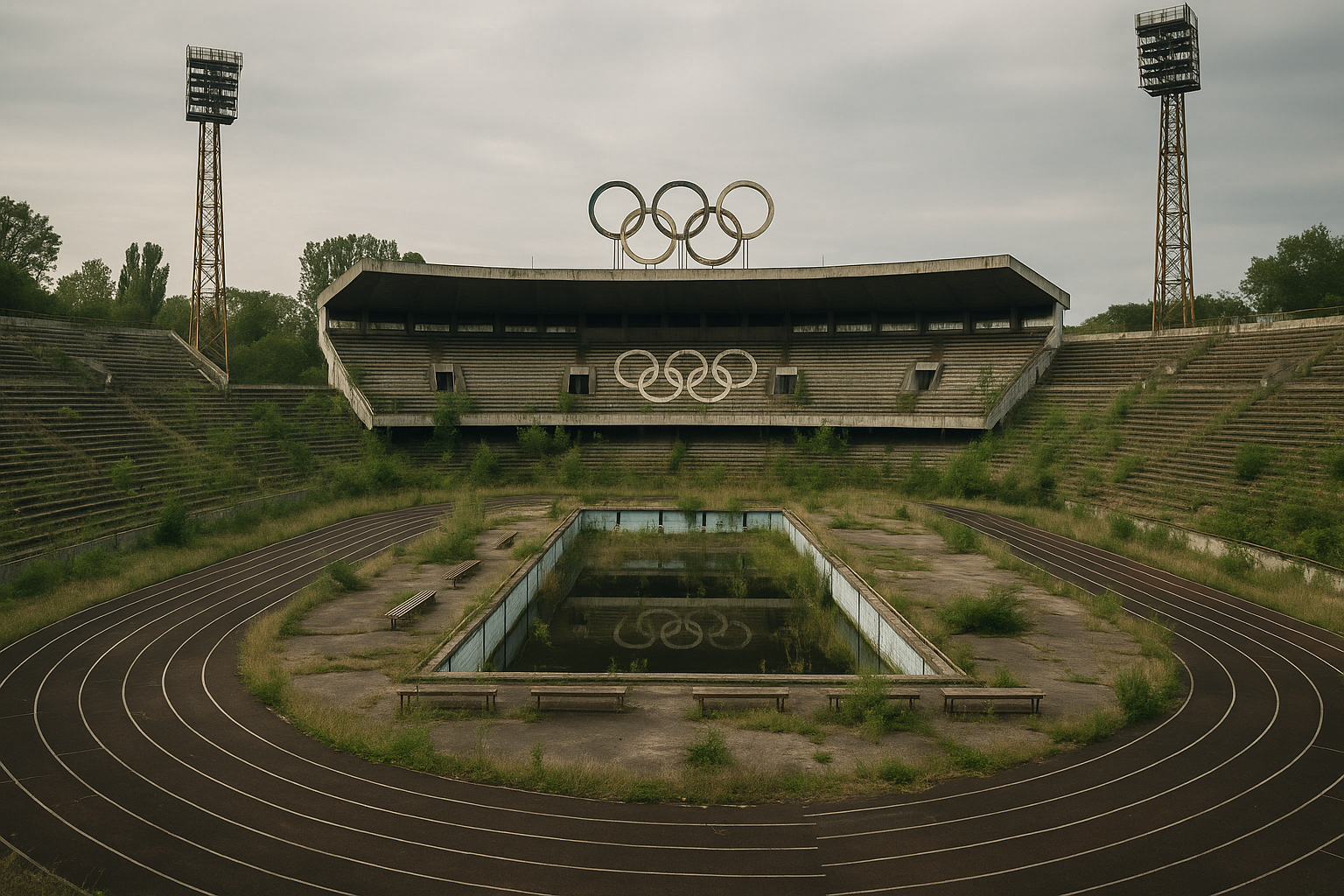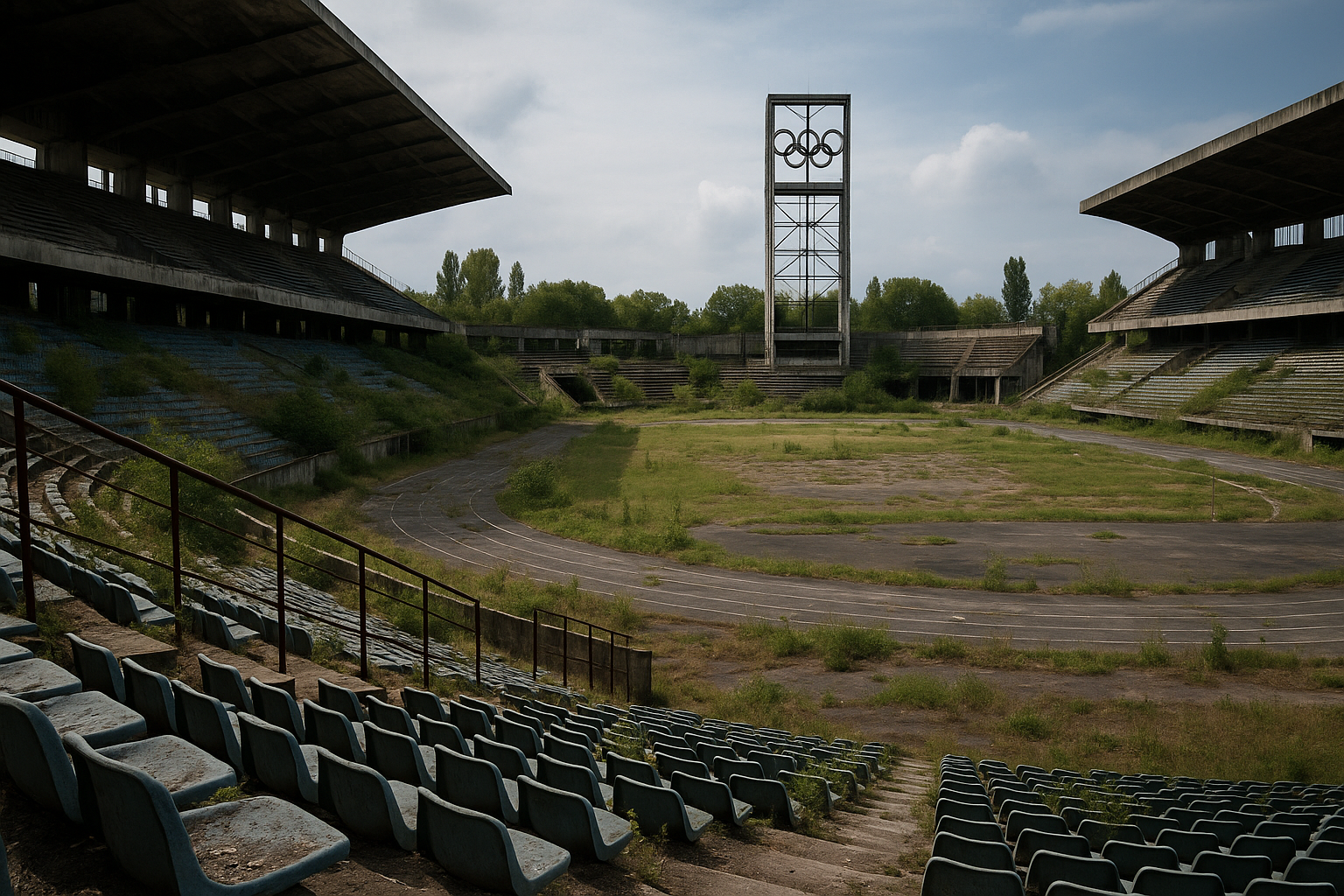The 9 Most Haunting Stadiums Built for the Olympics That Time Forgot
The Olympic Games, a grand spectacle of athletic prowess and international unity, have left an indelible mark on history. Yet, beneath the surface of the triumph and celebration, lies a more somber tale. Many stadiums constructed for these momentous events now stand as haunting relics of their former glory. These structures, once filled with the roar of cheering crowds, now echo with silence and decay. This article delves into nine such stadiums, exploring the reasons behind their abandonment and the eerie beauty they possess. Each section will unravel a piece of this forgotten legacy, painting a vivid picture of past grandeur and present neglect.
The Rise and Fall of Sarajevo's Olympic Legacy

The 1984 Winter Olympics in Sarajevo were a beacon of hope for a city then thriving under Yugoslavia's socialist regime. The stadiums, built to showcase the region's natural beauty and sporting talent, were state-of-the-art marvels. However, the onset of the Bosnian War in the 1990s turned these venues into battlegrounds. Today, the once-celebrated bobsled track snakes through the forest, covered in graffiti and overgrown with vegetation. The haunting remnants of Sarajevo's Olympic legacy serve as a poignant reminder of how quickly political strife can overshadow sporting triumphs, leaving behind a landscape of desolation and memories of what once was.
Athens: The Birthplace of the Olympics and Its Modern Ghosts

Athens, the cradle of the Olympic Games, hosted the modern event in 2004 with great anticipation. Billions were spent to construct gleaming new facilities, intended to revitalize the city and boost tourism. However, the economic crisis that followed left Greece struggling to maintain these costly structures. Many venues, including the iconic Olympic Sports Complex, now lie in disrepair, their seats empty and fields overgrown. This stark contrast between ancient Olympic ideals and modern economic realities underscores the challenges faced by host cities in preserving their Olympic heritage amidst financial constraints and shifting priorities.
The Forgotten Fields of Beijing's 2008 Olympics

The 2008 Beijing Olympics were a showcase of China's emergence as a global power, featuring awe-inspiring architecture and cutting-edge technology. Yet, despite the initial success, several venues have since fallen into disuse. The Bird's Nest stadium, while still maintained, struggles to find regular events to justify its upkeep. Other facilities, like the rowing and kayaking center, have been largely abandoned. This section explores how the rapid pace of development and the focus on spectacle over sustainability have contributed to the neglect of these once-proud symbols of China's Olympic achievement, raising questions about the long-term impact of such monumental endeavors.
Montreal's Olympic Stadium: A Legacy of Debt and Decay

Constructed for the 1976 Summer Olympics, Montreal's Olympic Stadium was dubbed "The Big O" for its ambitious design. However, it quickly became known as "The Big Owe" due to the massive debt incurred during its construction. Plagued by structural issues and cost overruns, the stadium's retractable roof never functioned properly. Today, it stands as a symbol of fiscal mismanagement, with its towering concrete structure casting long shadows over the city. Despite efforts to repurpose the venue, it remains a stark example of how the pursuit of Olympic glory can lead to long-lasting financial burdens and urban blight.
The Ghostly Venues of Rio's 2016 Games

The Rio 2016 Olympics were intended to showcase Brazil's vibrant culture and growing economy. Yet, just a few years later, many of the venues have been abandoned, succumbing to the elements and neglect. The Maracanã Stadium, once the heart of Brazilian football, now sits in disrepair, stripped of its seats and infrastructure. The Olympic Village, once home to thousands of athletes, is now a ghost town. This section examines the socio-economic factors that led to the rapid decline of Rio's Olympic infrastructure, highlighting the challenges faced by emerging economies in sustaining such large-scale investments.
Moscow's 1980 Olympics: Cold War Spectacles Turned Relics

The 1980 Moscow Olympics, held amidst Cold War tensions, were a showcase of Soviet might and ambition. The Lenin Stadium, central to the Games, was a marvel of engineering at the time. However, the dissolution of the Soviet Union and subsequent economic turmoil left many of these grand venues underutilized and neglected. Today, they stand as relics of a bygone era, their imposing structures a testament to the geopolitical struggles of the past. This section explores how the shifting tides of history have transformed these once-proud symbols of Soviet power into haunting reminders of political and social change.
The Abandoned Arenas of London’s 2012 Olympics

London's 2012 Olympics were hailed as a model of urban regeneration, with plans to repurpose venues for community use post-Games. While some facilities, like the Aquatics Centre, have thrived, others have not fared as well. The Olympic Park, intended to be a vibrant community hub, has seen parts fall into disuse, with some areas eerily quiet and underdeveloped. This section delves into the mixed legacy of London's Olympic infrastructure, examining the successes and failures in achieving long-term sustainability and community integration, and the lessons learned for future host cities striving to balance ambition with practicality.
The Lingering Shadows of Atlanta's 1996 Centennial Games

The 1996 Atlanta Olympics marked the centennial of the modern Games and were celebrated as a triumph of American enterprise and innovation. However, several venues constructed for the event have since been abandoned or repurposed beyond recognition. The Georgia Dome, once a bustling hub of activity, was demolished to make way for new developments. This section explores the transient nature of Olympic infrastructure in a rapidly changing urban landscape, highlighting the impermanence of these grand projects and the challenges cities face in preserving the legacy of such monumental events amidst evolving urban priorities.
The Silent Stands of Tokyo's 1964 Olympic Venues

Tokyo's 1964 Olympics were a symbol of Japan's post-war recovery and modernization, featuring cutting-edge architecture and technology. Yet, as the city prepared for the 2020 Games, many of the original venues lay forgotten. The Yoyogi National Gymnasium, once a marvel of modern design, now stands in stark contrast to the sleek new structures surrounding it. This section examines the delicate balance between preserving historical Olympic sites and embracing contemporary innovations, exploring how Tokyo's evolving urban landscape reflects broader societal shifts and the ongoing dialogue between past achievements and future aspirations in the world of sports and architecture.
Lessons from the Ghosts of Olympics Past

The haunting remains of these Olympic stadiums offer valuable lessons for future host cities. The allure of global prestige and economic gain often overshadows the practicalities of long-term planning and sustainability. This section synthesizes the insights gleaned from the nine stadiums, emphasizing the importance of strategic foresight and community engagement in the planning stages. It advocates for a more holistic approach to Olympic infrastructure, one that prioritizes legacy and adaptability to ensure these grand venues continue to serve their cities long after the closing ceremonies, transforming potential liabilities into lasting assets for future generations.








